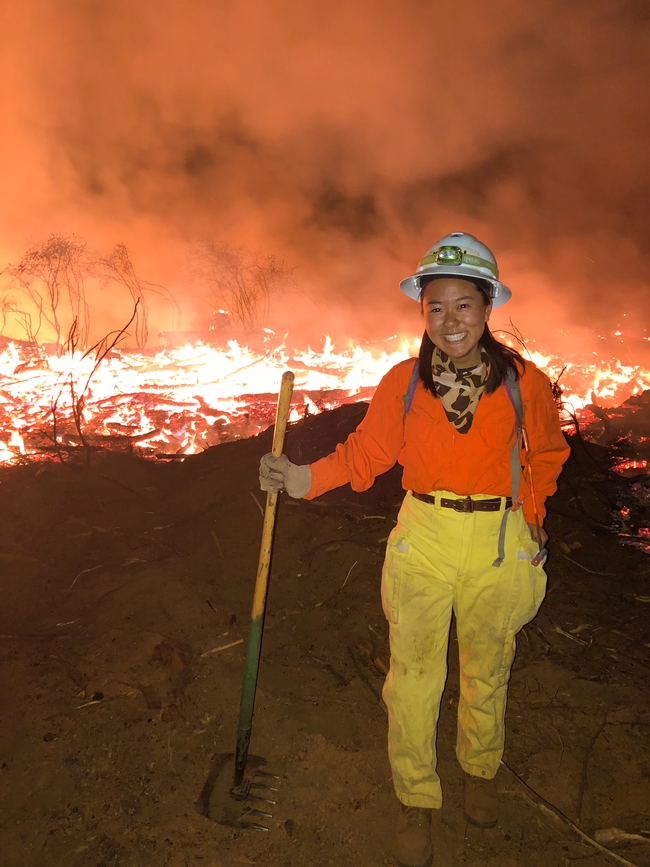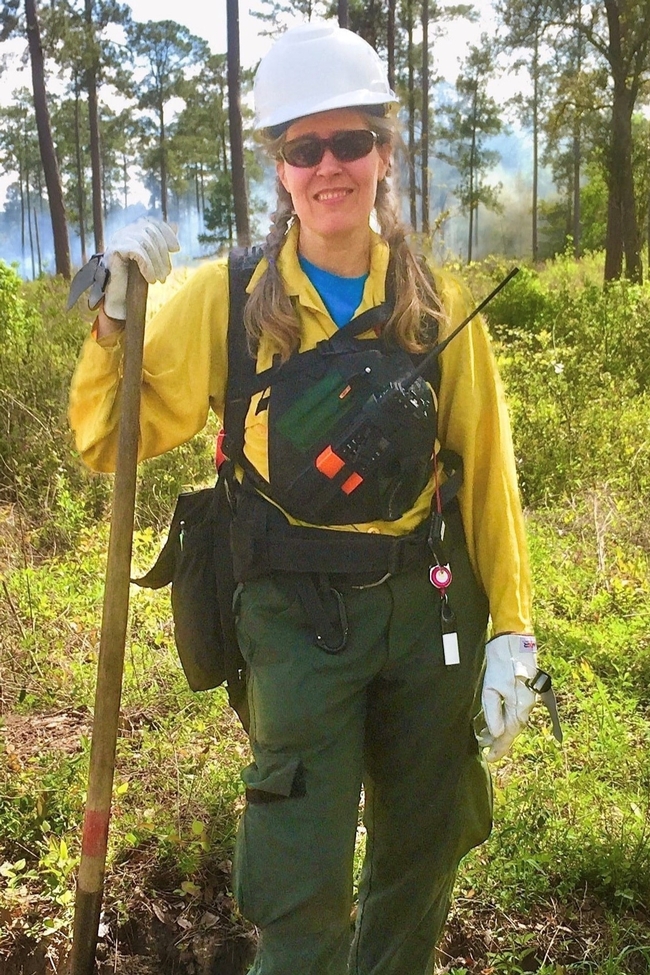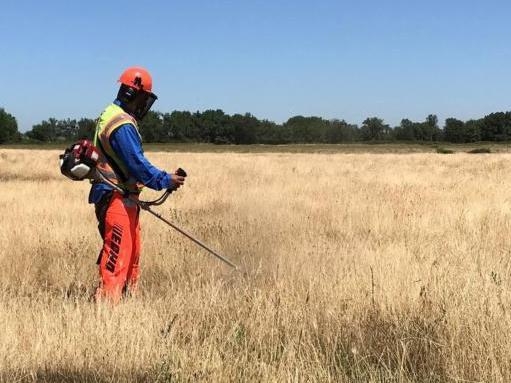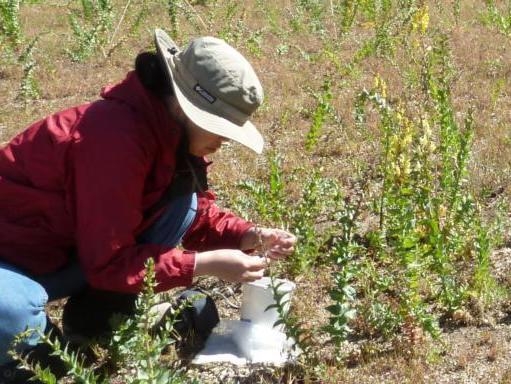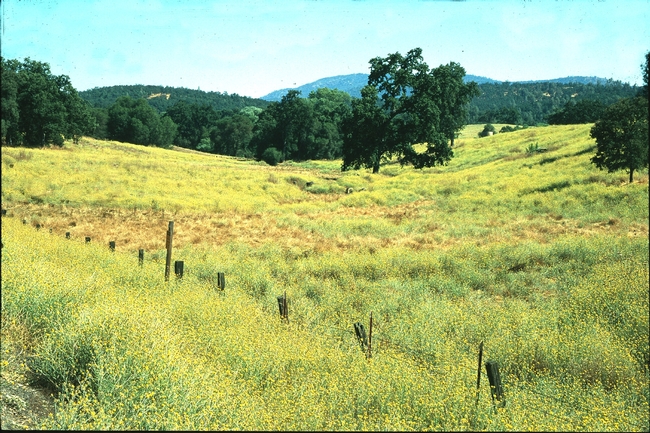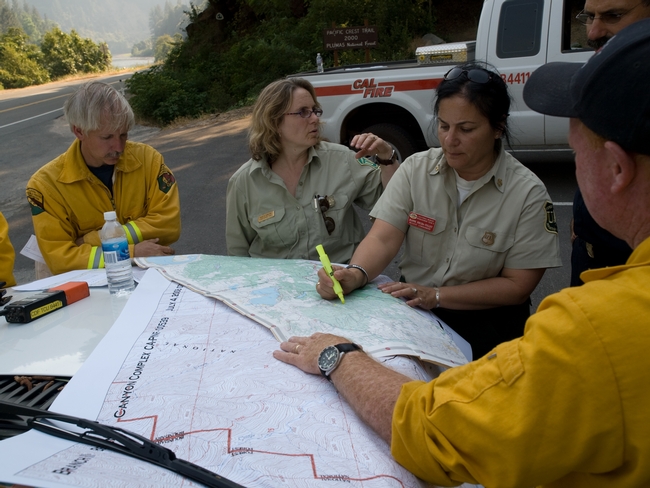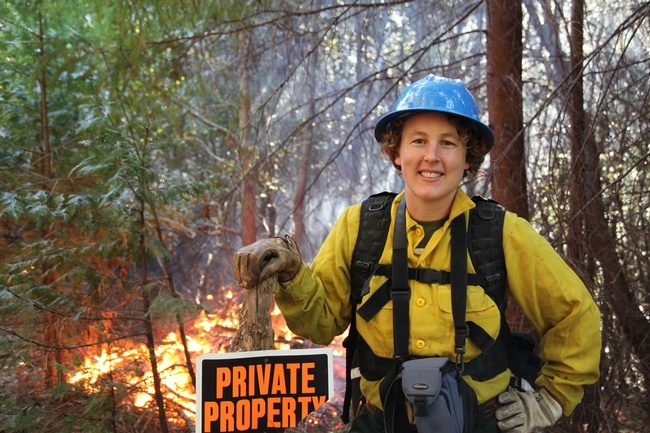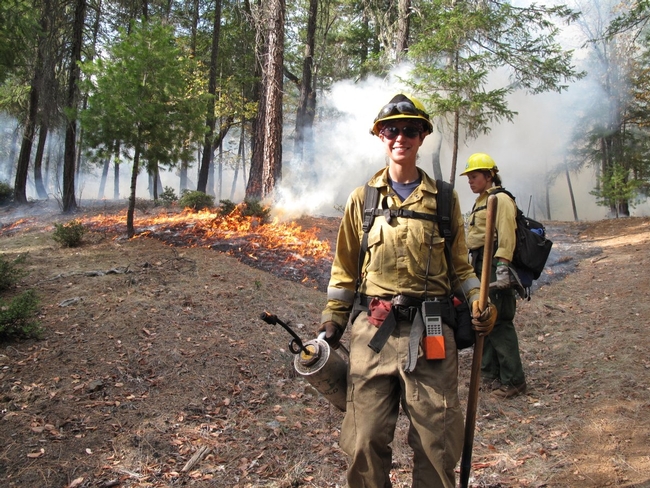
Posts Tagged: wildland
New advisors share crucial wildfire expertise
UC ANR hires more fire advisors to address growing threat to California communities
Bringing more expertise to more places across the state, University of California Agriculture and Natural Resources continues to hire fire advisors to help communities prepare for one of the most devastating climate-fueled threats.
With wildfires a constant danger as drought grips California, five highly skilled UC Cooperative Extension experts have joined the organization since early May:
- Katie Low, statewide fire coordinator (and also serving Nevada and Placer counties)
- Alison Deak, fire advisor serving Mariposa, Fresno and Madera counties
- Tori Norville, fire advisor serving Sonoma, Napa and Marin counties
- Barb Satink Wolfson, fire advisor serving Monterey, San Benito, Santa Clara and Santa Cruz counties
- Luca Carmignani, fire advisor serving Los Angeles and Orange counties
These positions – as well as other recent additions in agriculture and natural resources fields – are made possible by California's commitment, as reflected in the state budget, to improve the lives of residents in the face of a changing climate.
This robust team of fire experts provide broad knowledge and practical advice on a wide range of topics, including fire hazard mitigation, fire ecology, prescribed fire, wildland fire research, forest and wildlife management, and climate change effects.
Although their specific areas of expertise vary, all the new fire advisors are dedicated to helping residents and community groups across California become more fire-aware, adapted and resilient. They share vital information on how Californians can prepare homes, landscapes and property for wildfire.
Katie Low

First, she will coordinate and partner with UCCE fire advisors throughout California to develop and deliver wildfire-related science and outreach materials for a wide range of communities across the state. Low said encouraging diversity in the network of fire experts and engaged communities will be crucial.
“One of my goals is to help build and maintain a diverse and inclusive community of fire and natural resource professionals,” she said.
Based at the UCCE office in Auburn, Low also will collaborate with local natural resource professionals and residents in Nevada and Placer counties on projects that bolster community and ecosystem resilience to wildfire and climate change.
“I look forward to working with community groups, land managers and scientists to implement viable fire-resilient management strategies for ecosystems in the region and statewide,” Low said.
Equipped with bachelor's degrees in geography and ecosystems management and forestry, as well as a master's in forestry, all from UC Berkeley, Low brings to UC ANR a wealth of knowledge and a variety of experience.
As a fire and forest ecologist, she studied the impacts of fuels-reduction and forest-restoration treatments on Sierra Nevada mixed-conifer forests. Low also worked as operations coordinator for the California Outdoor Engagement Coalition, and as a forestry aide for California Department of Forestry and Fire Protection's Forest Biometrics Program.
Low can be reached at 530-889-7385 and katlow@ucanr.edu; follow her on Twitter @lowseverityfire.
Alison Deak
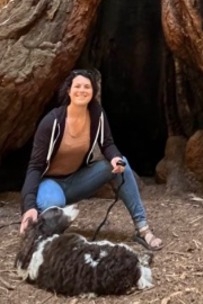
Her role as fire advisor will include promoting the use of prescribed fire to help restore fire adapted landscapes. She will also prioritize community education, applied research and partnership building efforts that are based on scientifically informed ways to help communities mitigate, prepare for, and recover from wildfire.
Originally from northeast Ohio where there are no wildfires according to Deak, it was not until she moved to Colorado for college that she learned of their impact.
When the 2012 Waldo Canyon Fire occurred, Deak felt like her playground was burning down so she acted. She began volunteering with the wildfire recovery effort and her career into fire science took off from there.
Deak earned a bachelor's in geography and environmental studies from the University of Colorado in Colorado Springs and master's degrees in geography and nonprofit management from the University of Oregon.
Before moving to California and joining UC ANR, Deak worked as a wildland firefighter with the United States Forest Service and Bureau of Land Management.
When asked what she is looking forward to most, Deak shared that she is passionate about increasing diversity in the fire science field and, particularly, empowering more women to join. She is eager to help community members prepare for wildfire and mitigate fire risk in a safe and competent manner.
Deak is located at the UC Cooperative Extension office in Mariposa County and can be reached at aldeak@ucanr.edu.
Tori Norville
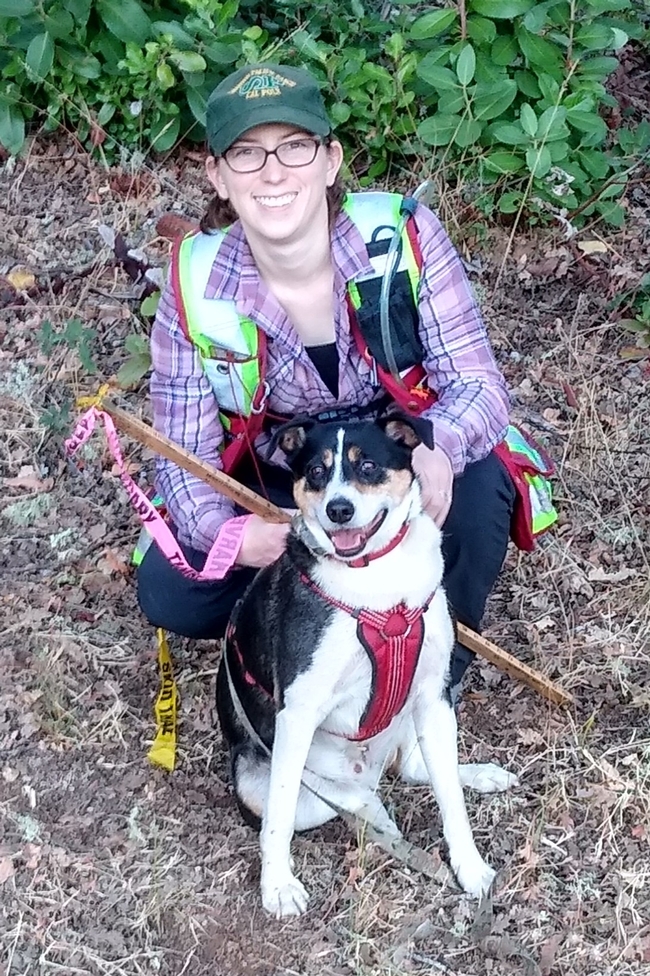
In this capacity, Norville will work with residents and organizations within the wildland-urban interface to encourage and cultivate fire-adapted communities. She aims to provide education and outreach on home hardening, defensible space and the importance of forest and fuel management on the landscape.
While pursuing her bachelor's degree in forestry and natural resources at Cal Poly San Luis Obispo, Norville became interested in “disturbance ecology” – how factors such as disease, insects and fire affect landscapes and environments.
“Many of the forest health problems we are seeing are stemming from a lack of disturbance, which traditionally was fire,” Norville said.
Her understanding of fire and its effects deepened during her master's degree studies in forestry science (also at Cal Poly SLO), as well as through her seven years with CAL FIRE at the Jackson Demonstration State Forest in Mendocino County. She worked as the Registered Professional Forester for its Timber Sales Program, and then the Research and Demonstration Program.
Norville's firsthand experiences from the past few fire seasons have helped shape her goals and approach. She hopes to “work holistically with disturbances” – specifically fire – on the landscape to foster healthy forests and ecosystems that are adaptable and resilient, while also researching the environmental and social aspects of fuel-reduction projects and prescribed fire.
“Hopefully, I can begin to change the perception of fire from something we need to fear, to something we respect,” she said.
Norville, based at the UCCE office in Santa Rosa in Sonoma County, can be reached at trnorville@ucanr.edu.
Barb Satink Wolfson
Barb Satink Wolfson began in her role as UC Cooperative Extension fire advisor for Monterey, San Benito, Santa Clara and Santa Cruz counties on June 30.
Her primary responsibilities include wildland fire-related research and outreach for the Central Coast region, while building trust, strong partnerships and collaborative relationships within both professional and non-professional communities.
Satink Wolfson earned her B.S. and M.S. in forestry from Northern Arizona University, and brings to UC ANR more than 20 years of fire-research and outreach experience in Arizona. Her favorite job, though, was working as a backcountry ranger in Yosemite National Park during her undergraduate years.
In her new role, Satink Wolfson hopes to address some of the questions behind the use of prescribed fire in a variety of ecosystems (such as coastal prairies and oak woodlands), and help all Central Coast communities build resilience to wildland fire so residents can live safely within fire-adapted landscapes.
Satink Wolfson, based at the UCCE office in Hollister, can be reached at bsatinkwolfson@ucanr.edu.
Luca Carmignani

Prior to joining UC ANR, Carmignani was a postdoctoral researcher in the Berkeley Fire Research Lab at UC Berkeley. His research has focused on fire and combustion applications, from wildland fires to material flammability.
He earned his Ph.D. in engineering sciences from the joint doctoral program between UC San Diego and San Diego State University after obtaining his bachelor's and master's degrees in aerospace engineering from the University of Pisa in Italy.
Carmignani is based at South Coast Research and Extension Center in Irvine and can be reached at carmignani@ucanr.edu and (949) 237-2956. Follow him on Twitter @l_carmignani.
UC launches WeedCUT, a new online tool to manage invasive weeds in wildlands without herbicides
California has abundant wildlands — forests, rangeland, open areas, wildlife refuges and national, state, and local parks — that need protection from invasive plants. Invasive plants affect all Californians by increasing wildfire potential; reducing water resources; accelerating erosion and flooding; threatening wildlife; degrading range, crop and timberland; and diminishing outdoor recreation opportunities. According to the California Invasive Plant Council (Cal-IPC), more than 200 identified plant species harm California's wildlands.
Cal-IPC and the University of California Statewide Integrated Pest Management Program (UC IPM), with funding from the California Department of Pesticide Regulation (DPR) Alliance Grants Program, developed two resources that provide land managers access to the latest information on non-herbicide practices for managing weeds in wildlands. Best Management Practices for Non-Chemical Weed Control is a free downloadable manual. The same information has been incorporated into an interactive online tool called WeedCUT (Weed Control User Tool: weedcut.ipm.ucanr.edu).
"We anticipate WeedCUT will increase the use of more mechanical, physical, or biological practices, and potentially result in the reduction of herbicides used to manage wildland invasive weeds," said area IPM advisor emeritus Cheryl Wilen. "Best Management Practices for Non-Chemical Weed Control and WeedCUT were developed so land managers can become more knowledgeable and skilled in the use of non-herbicide methods as part of an IPM program.”
Best Management Practices for Non-Chemical Weed Control provides comprehensive descriptions of 21 commonly used non-herbicide weed control techniques and biological control agents for 18 invasive plants. Each chapter is the synthesis of research and on-the-ground knowledge from practitioners about non-herbicide methods. The chapters describe how a technique is best applied, the types of invasive plants and environmental conditions where it is most effective, and what its shortfalls might be. Environmental, cultural, and human safety risks are highlighted to help support the safe and effective use of these methods.
WeedCUT is the online version and can be used to learn about the different non-herbicide management methods, including the section on biological control. To filter through the database and learn which management practice to consider for a particular site and invasive plant type, a simple interface allows users to pick characteristics that describe their site and invasive plant problem. The tool then filters through the database to display the practices ranked by efficacy (excellent, good, fair, poor or ineffective). As in the manual, use of the technique and potential hazards are covered.
Best Management Practices for Non-Chemical Weed Control and WeedCUT are designed to be the go-to resources for practitioners that complement their conventional weed management work with non-herbicide techniques or are restricted in their use of herbicides. Both resources will help practitioners manage weeds more effectively.
“Many experts in the field have contributed to create the manual and WeedCUT. It has been exciting to see these techniques described and reviewed so carefully. We're looking forward to seeing land managers, as well as all folks fighting weeds, incorporating the information from the manual and WeedCUT into their work,” said Jutta Burger, science program director and project lead with Cal-IPC.
While the manual and tool focus on non-herbicide methods, the hope is future funding can be found to continue the work and integrate herbicide options online.
"Land managers typically use both herbicide and non-herbicide methods, alone and in combination, to manage invasive plants in wildlands," said UC Cooperative Extension advisor and UC IPM-affiliated advisor Tom Getts. "A tool that combined both herbicide and non-herbicide methods would guide land managers to determine the most effective overall management program for their particular site."
Stinking Stinknet is Spreading in Southern California. What Does That Mean for You?
Stinknet (Oncosiphon piluliferum, aka globe chamomile) is a winter annual that is spreading across...
Women learn to burn and lead in fire management in Northern California Oct. 19-28
Workshop aims to spark women's ambition to become leaders in fire management
Shortly after her son was born, Jeanne Pincha-Tulley was promoted to fire chief of a national forest. For the first six months, she brought the baby to work.
“Most of my colleagues were men between 40 and 50. I was 31,” recalled Pincha-Tulley, who was the first woman to achieve the rank of U.S. Forest Service fire chief in California. “My second son was 6 weeks old and nursing. They had no idea what to do. They absolutely freaked out.”
While great efforts are being made to recruit women into fire management, women hold only 10 percent of wildland fire positions and 7 percent of leadership roles. A new training focuses on grooming women to lead in fire management.
To encourage to women build stronger networks and pursue leadership roles in fire management, Pincha-Tulley, who retired in 2015 after 36 years with the U.S. Forest Service, will be speaking from experience on gender roles at the Women-in-Fire Prescribed Fire Training Exchange (WTREX) in Northern California. She will also serve as deputy incident commander for the event.
WHO: Participants from 12 states and four countries, including 38 women and six men, who work for federal and state agencies, non-governmental organizations, tribes and universities. Organizers include Pincha-Tulley, Lenya Quinn-Davidson, UC Cooperative Extension wildland fire advisor and director of the Northern California Prescribed Fire Council; and Amanda Stamper, The Nature Conservancy fire management officer in Oregon, among others. Guest speakers include Sarah McCaffrey, USDA Forest Service research social scientist; Johnny Stowe, forester/biologist/yoga teacher/fire manager of the South Carolina Department of Natural Resources; Gwen Sanchez, deputy fire chief for the Shasta-Trinity National Forest, and many more.
WHAT: WTREX participants will serve in qualified and trainee firefighting positions to implement prescribed burns throughout the region. They will complete pre- and post-fire monitoring, train with equipment, practice fireline leadership skills and learn about local fire ecology and fire management.
WHERE: The training will take place in Trinity and Shasta counties. Sites include open prairies, oak woodlands, mixed-conifer forests and chaparral. Field trips will be made to areas burned in recent wildfires and to prescribed fire and fuels treatment project sites.
WHEN: Oct. 19-28, beginning in Hayfork, ending in Redding. Burning and other outdoor activities will depend on the weather.
DETAILS: The 12-day hands-on prescribed fire training, modeled after prescribed fire training events that take place across the country, will include beginners to seasoned professionals. The difference is that most of the participants are women.
“I'm excited for this event because it will transcend the usual TREX emphasis on cooperative burning and learning,” Lenya Quinn-Davidson, UC Cooperative Extension wildland fire advisor, who is part of the team organizing the event. “It will explicitly recognize and reinforce the importance of female perspective and leadership in fire management, and provide a supportive environment for women and men to understand and elevate the need for diversity in fire management—not only in numbers, but also in approach.”
Based at the Tahoe National Forest, Pincha-Tulley oversaw 1.6 million acres, including fire suppression, prescribed fire and aviation operations.
As the only woman among the 17 national Incident Commanders, Pincha-Tulley looked for allies and mentors. In 2005, the year she was promoted to Type 1 Incident Commander, she led her team to Mississippi to assist in the aftermath of Hurricane Katrina. She was essentially invisible to the Air Force generals and Navy admirals until she put general stars on her uniform. A NASA director, a man, coached her, saying, “Are you going to let them take over the meeting? You're their peer, make yourself one.” He proceeded to mentor her, based on NASA's training for women in management.
“When you look for those people who can help, you begin to attract them,” Pincha-Tulley said. One of the primary goals of the Women-in-Fire Prescribed Fire Training Exchange is to connect women who work in fire, providing them with new networking and mentoring opportunities.
WTREX is co-hosted by eight primary partners as well as additional collaborators. These include the Northern California Prescribed Fire Council, the Fire Learning Network, the Cultural Fire Management Council, the Watershed Research and Training Center, the Bureau of Land Management, the USDA Forest Service, the California Fire Science Consortium, University of California Cooperative Extension, and other collaborators.
WTREX is supported by Promoting Ecosystem Resiliency through Collaboration: Landscapes, Learning and Restoration, a cooperative agreement between The Nature Conservancy, USDA Forest Service and agencies of the Department of the Interior.

